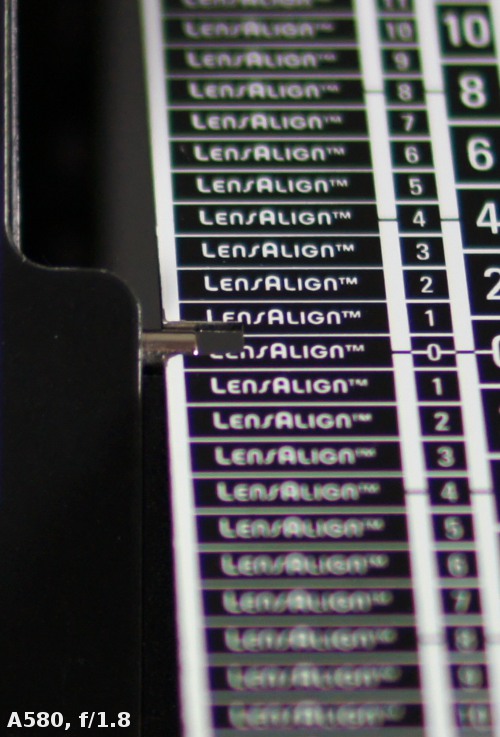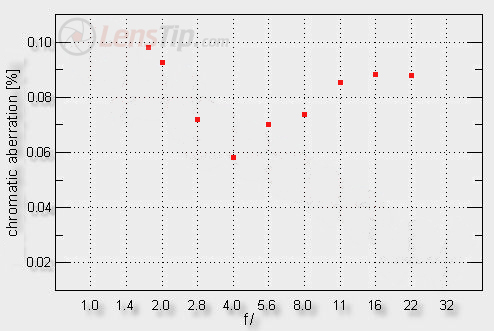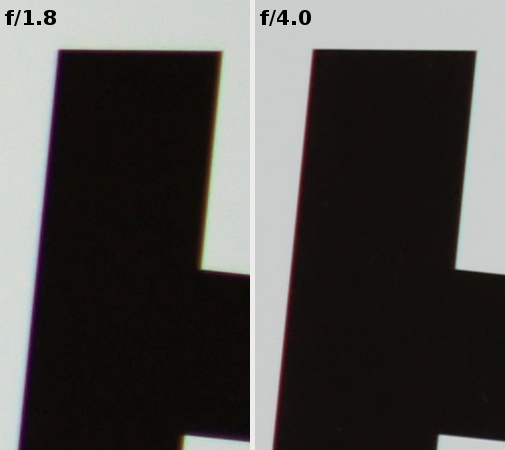Sony DT 35 mm f/1.8 SAM
5. Chromatic aberration
 |
When it comes to the lateral chromatic aberration the situation is better. Let’s have a look at the graph below.
Please Support UsIf you enjoy our reviews and articles, and you want us to continue our work please, support our website by donating through PayPal. The funds are going to be used for paying our editorial team, renting servers, and equipping our testing studio; only that way we will be able to continue providing you interesting content for free. |
- - - - - - - - - - - - - - - - - - - - - - - - - - - - - - - - - - - - - - - - - - - - - - - -

First of all we see here a performance definitely more promising than that of the Nikkor 1.8/35 which showed a significant aberration on the level of 0.13-0.17%. The Sony doesn’t exceed the value of 0.1% even at the maximum relative aperture and momentarily its aberration decreases to an imperceptible level of 0.06%. The lateral chromatic aberration is something a typical user of this lens doesn’t have to worry about.
 |






